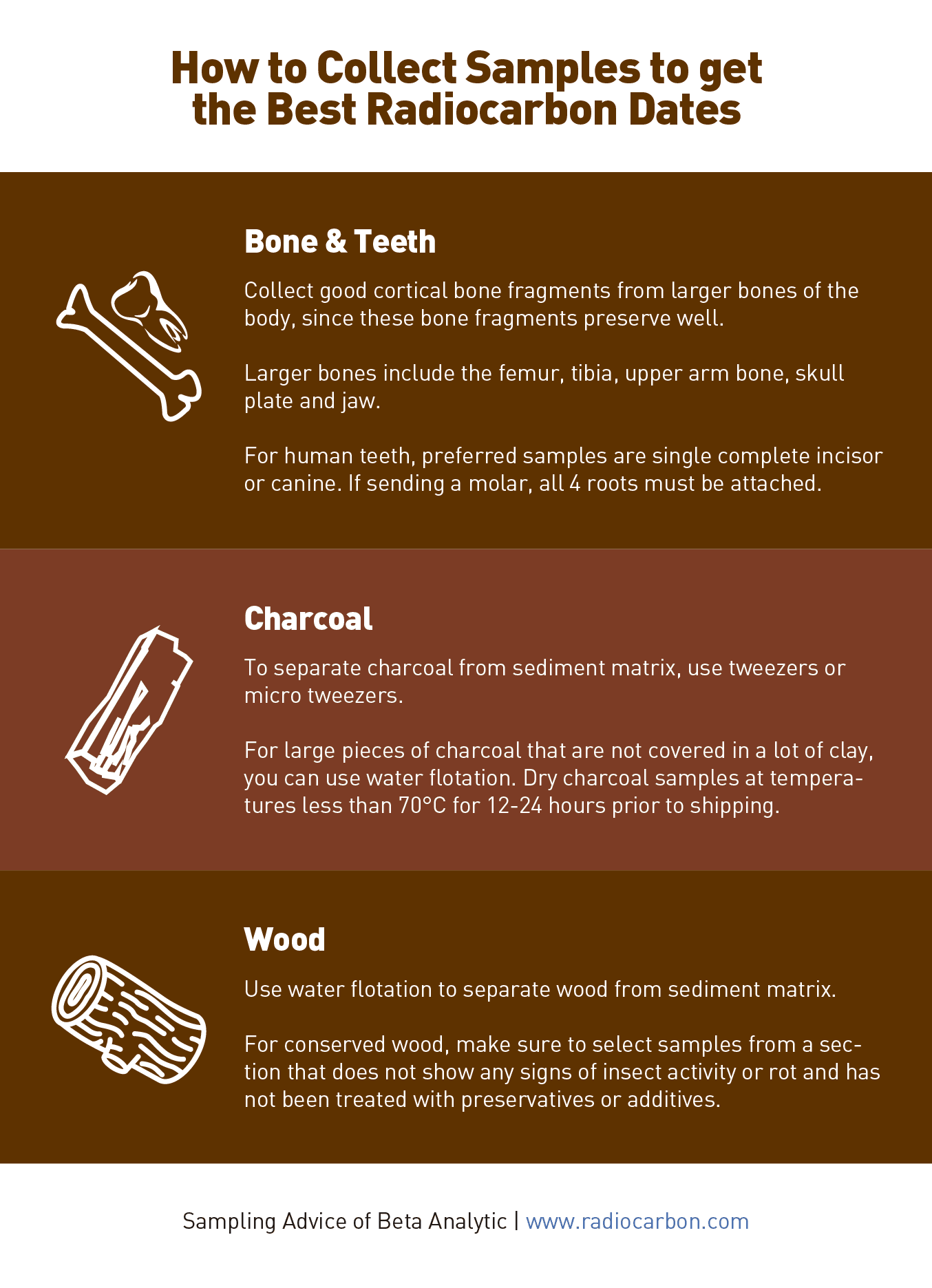Radiocarbon dating artifacts
Libby estimated that the steady state radioactivity concentration of exchangeable carbon 14 would be about 14 disintegrations per minute dpm per gram. In , Libby was awarded the Nobel Prize in Chemistry for this work. He demonstrated the accuracy of radiocarbon dating by accurately estimating the age of wood from a series of samples for which the age was known, including an ancient Egyptian royal barge of BCE.
The dating method is based on the fact that carbon is found in various forms, including the main stable isotope carbon 12 and an unstable isotope carbon Through photosynthesis, plants absorb both forms from carbon dioxide in the atmosphere.
- How has radiocarbon dating changed archaeology?!
- Radiocarbon Dating and Archaeology - AMS lab Beta Analytic;
- pagan dating site australia.
- mauritius free dating site.
- Why Is Radiocarbon Dating Important To Archaeology?.
- How Do Scientists Date Ancient Things?;
When an organism dies, it contains a ratio of carbon 14 to carbon As the carbon 14 decays with no possibility of replenishment, the ratio decreases at a regular rate. This rate is known as half-life. The measurement of carbon 14 decay provides an indication of the age of any carbon-based material. Dates may be expressed as either uncalibrated or calibrated years. A raw date cannot be used directly as a calendar date, because the level of atmospheric carbon 14 has not been constant during the span of time that can be radiocarbon dated. In addition, there are substantial reservoirs of carbon in organic matter, the ocean, ocean sediments, and sedimentary rock.
History, anthropology, and archaeology are three distinct but closely related bodies of knowledge that tell man of his present by virtue of his past. Historians can tell what cultures thrived in different regions and when they disintegrated.
Radiocarbon Dating and Archaeology
Archaeologists, on the other hand, provide proof of authenticity of a certain artifact or debunk historical or anthropological findings. Studying the material remains of past human life and activities may not seem important or exciting to the average Joe unlike the biological sciences. It is in knowing what made past cultures cease to exist that could provide the key in making sure that history does not repeat itself. Over the years, archaeology has uncovered information about past cultures that would have been left unknown had it not been with the help of such technologies as radiocarbon dating, dendrochronology , archaeomagnetic dating, fluoride dating, luminescence dating, and obsidian hydration analysis, among others.
Radiocarbon dating has been around for more than 50 years and has revolutionized archaeology. Carbon 14 dating remains to be a powerful, dependable and widely applicable technique that is invaluable to archaeologists and other scientists. The unstable and radioactive carbon 14, called radiocarbon, is a naturally occurring isotope of the element carbon.
- Please contact the OCIO Help Desk for additional support..
- dating a greek girl.
- dating for country lovers.
When a living thing dies, it stops interacting with the biosphere, and the carbon 14 in it remains unaffected by the biosphere but will naturally undergo decay. Decay of carbon 14 takes thousands of years, and it is this wonder of nature that forms the basis of radiocarbon dating and made this carbon 14 analysis a powerful tool in revealing the past. The process of radiocarbon dating starts with the analysis of the carbon 14 left in a sample.
Calibration is then done to convert BP years into calendar years. This information is then related to true historical dates. Before deciding on using carbon dating as an analytical method, an archaeologist must first make sure that the results of radiocarbon dating after calibration can provide the needed answers to the archaeological questions asked.
The implication of what is represented by the carbon 14 activity of a sample must be considered. The sample-context relationship is not always straightforward.

Date of a sample pre-dates the context it is found. Some samples, like wood, already ceased interacting with the biosphere and have an apparent age at death and linking them to the age of the deposits around the sample would not be wholly accurate. There are also cases when the association between the sample and the deposit is not apparent or easily understood. Great care must be exercised when linking an event with the context and the context with the sample to be processed by radiocarbon dating.
An archaeologist must also make sure that only the useful series of samples are collected and processed for carbon dating and not every organic material found in the excavation site. It is important that the radiocarbon scientists and archaeologists agree on the sampling strategy before starting the excavation so time, effort, and resources will not be wasted and meaningful result will be produced after the carbon dating process. It must be stressed that archaeologists need to interact with radiocarbon laboratories first before excavation due to several factors.
Laboratories have limitations in terms of the samples they can process for radiocarbon dating. Some labs, for example, do not date carbonates.
Radiocarbon dating lab scientists and archaeologists should coordinate on History, anthropology, and archaeology are three distinct but closely related. Prior to the development of radiocarbon dating, it was difficult to tell when an archaeological artifact came from. Unless something was obviously attributable to a.
Laboratories must also be consulted as to the required amount of sample that they ideally like to process as well as their preference with certain samples for carbon dating. Other labs accept waterlogged wood while others prefer them dry at submission.
ANP264 | Spring 2013
Contaminants must not be introduced to the samples during collection and storing. Hydrocarbons, glue, biocides, polyethylene glycol or polyvinyl acetate PVA must not come in contact with samples for radiocarbon dating. Other potential contaminants include paper, cardboard, cotton wool, string and cigarette ash.
Samples must be stored in packaging materials that will protect them during transport and even during prolonged storage.